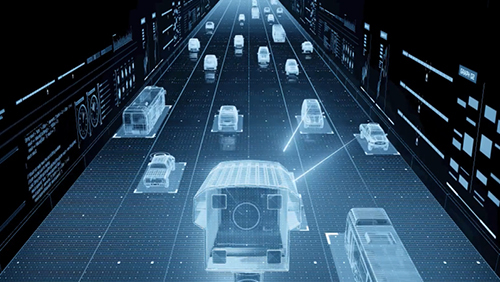The increasing breadth of connectivity in vehicles can bring valuable features to automakers and consumers alike.
Chief among these are the enabling of proactive and predictive performance and maintenance diagnostics. This same connectivity will also allow over-the-air (OTA) software updates, as well as real-time local and cloud-based status monitoring such as tire pressure, fuel level, sensor readings, error codes, among other helpful diagnostic information.
Microsoft’s partnership with tire-maker Bridgestone to develop a tire damage monitoring system, using its Connected Vehicle Platform, is just the latest example of vehicle connectivity expanding past infotainment systems and into every level of the vehicle. The rise of the “everything connected” vehicle also provides opportunities for carmakers to expand partnerships, not just with consumers but with body shops and Tier 1 suppliers.
As the industry continues to evolve to electric vehicles, management of battery systems, the entire unit of batteries and the individual cells, is also going to be a key area of connected diagnostics for automakers, explained IDC’s next generation automotive research manager Matt Arcaro. “The goal is to connect everything, at least at a read minimum. It’s all about providing visibility: seeing more about how the vehicle runs beyond diagnostics or interval based maintenance,” he explained. “Where we are going is moving to the area of using that visibility to take action on it.”
Providing vehicle owners with this visibility will also help to extend the automaker’s relationship their customer, potentially offering new revenue streams alongside the additional value. Arcaro said that could even extend to helping the customer get the vehicle sold in secondary markers, or potentially even offering extended services like warranties, and more predictive scoring to gauge whether a customer has been conforming to warranty characteristics.
However, he noted one challenge will be overcoming the communications lag built into earlier generations of connected vehicle platforms, which will require the redesign of communications pathways so that it can be done in a real time manner, while simultaneously connecting more and more systems. “There’s also still significant data siloing going on and there’s a breakdown getting that data from team to team, which automakers would need to use to more proactivity understand uses, like when parts will need maintenance,” he said.
Another complication is the security and data privacy issues that having ultra-connected vehicles raises, with issues related to strict data regulations and ways of ensuring the consumer has consented to collection and use of driving data, something Arcaro wasn’t alone in pointing out.
“The downside is all this connectivity also increases the vehicle’s cyber attack risk,” noted Grant Courville, vice-president of product management and strategy at BlackBerry QNX, told TU-Automotive. “Today’s vehicles, like any connected system, are vulnerable to attack, and each connected feature is a possible attack vector.”
Like Arcaro, he explained that he anticipates predictive maintenance as being one of the areas that will be of interest to both carmakers and consumers. “For automotive OEMs, the lure is being able to provide car owners with value-added services as well as issue new features and critical software updates automatically,” Courville said.
Increasingly connected cars could also prove attractive to fleet operators in automotive, trucking and public transportation to help them gain insights into key areas within the vehicle to avoid failures and accidents associated with critical components such as bearings, tires, braking systems, lighting systems and of course engine breakdowns.
Blackberry has already partnered with Amazon Web Services to on a connected vehicle software platform for in-vehicle applications that enables automotive manufacturers to securely access data from vehicle sensors and create software applications and machine-learning models for connected, electric, and autonomous vehicles. This included combining with large amounts of live and historical data from vehicles in the field with machine learning algorithms to make predictions about anomalies in the vehicle, such as predicting the state of health of an electric battery, to help mitigate warranty claims.
“Each component will need a sensor that has information and can determine where it is in its lifespan, from tire pressure on up,” Arcaro said. “Having the connected vehicle data is also helpful to the Tier Ones to help determine what went wrong in a recall scenario, so OEMs and Tier 1s can have a conversation to help troubleshoot that.”
Indeed, technology convergence is pushing alliances between once isolated business industries, evidenced through the partnerships being developed between General Motors and Lyft, Fiat-Chrysler Automobiles and Google, and Samsung and Harman. “Nowadays it’s much more of a collaborative ecosystem where vehicle manufacturers, suppliers, service providers, and companies from across the automotive electronics, semiconductor, software and communications industries, are coming together to drive information sharing, standardized automotive architectures and new global industry standards,” Courville said.
By Nathan Eddy
Source: https://www.tu-auto.com
CUT COTS OF THE FLEET WITH OUR AUDIT PROGRAM
The audit is a key tool to know the overall status and provide the analysis, the assessment, the advice, the suggestions and the actions to take in order to cut costs and increase the efficiency and efficacy of the fleet. We propose the following fleet management audit.




